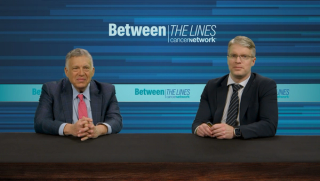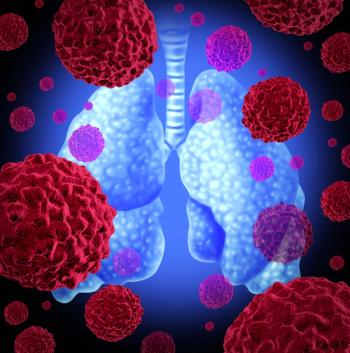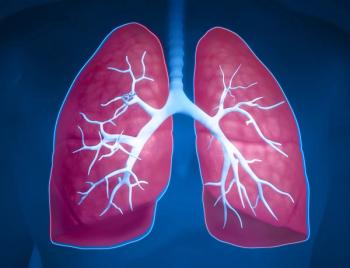
Non-Small Cell Lung Cancer (NSCLC)
Latest News
Latest Videos

More News

The decision is based on results from the phase 1/2 SOHO-01 trial evaluating the agent in patients with advanced HER2-mutant non–small cell lung cancer.

Patients who received 70 Gy of radiotherapy had a significantly longer duration of treatment than those who received less than 70 Gy.

Stage IV lung cancer may be curable based on the success of the DREAM Program, according to thoracic surgeon, Ankit Bharat, MBBS,

Ankit Bharat, MBBS, a thoracic surgeon, discussed potential treatment-emergent adverse effects or complications as well as strategies for managing them.

Thoracic surgeon Ankit Bharat, MBBS, discussed surgical strategies among patients with advanced lung cancer diagnoses based on staging.

Data from the INCITE-ES study show 100% technical success with pulsed electric field energy delivery before surgical resection.

Given an unmet need for efficacious therapies against ALK-positive NSCLC, experts discuss optimal ALK TKI sequencing for patients with this disease.

Panelists discuss how proactive management of adverse effects through the COCOON protocol represents a paradigm shift that could be applied to other EGFR inhibitors, emphasizing early intervention before symptoms appear.

Panelists discuss how implementing standardized order sets in electronic medical records and providing printed patient education materials can help streamline the COCOON protocol implementation.

Findings from the CheckMate 77T study support the approval of this nivolumab-based regimen in the European Union.

Data from the phase 2 LUMINOSITY study support the FDA approval of telisotuzumab vedotin in this non–small cell lung cancer population.

Panelists discuss how keeping management of dermatologic adverse effects “in-house” with oncology teams is often preferable to referring patients to dermatologists, though some patients occasionally benefit from specialized care for nail issues.

Panelists discuss how regular monitoring, patient education about reporting symptoms promptly, and visual assessment during biweekly visits are essential for effectively managing dermatologic adverse events.

Treatment with lorlatinib might be effective regardless of the presence of central nervous system metastases, according to Misako Nagasaka, MD, PhD.

Most central nervous system events with lorlatinib were grade 1 or 2 in the phase 3 CROWN trial.

Treatment with lorlatinib did not increase cardiovascular events among patients with ALK-positive non–small cell lung cancer in the CROWN trial.

At 5 years, 60% of patients who received lorlatinib in the phase 3 CROWN study achieved progression-free survival.

Panelists discuss how the standardized COCOON regimen offers clear guidance for managing dermatologic adverse effects, with specific components such as clindamycin lotion for the scalp and chlorhexidine wash for nails showing effectiveness.

Panelists discuss how patients have been receptive to the proactive management approach that effectively reduces dermatologic adverse effects, despite initial concerns about adding multiple prophylactic interventions.

Ongoing ctDNA analysis may elucidate outcomes associated with divarasib plus migoprotafib for those with KRAS G12C–positive NSCLC.

Panelists discuss how overcoming resistance mechanisms in EGFR-mutated non–small cell lung cancer (NSCLC) remains a key unmet need, with future research focusing on targeting these mechanisms, exploring new drug combinations, and optimizing treatment sequences to improve patient outcomes.

The phase 3 HARMONi-6 trial found invonescimab plus chemotherapy improved PFS vs tislelizumab plus chemotherapy in squamous NSCLC.

In first-line, EGFR-mutated NSCLC, targeted therapies such as osimertinib or amivantamab plus lazertinib are recommended.

A 5-year follow-up of the phase 3 EMPOWER-Lung 1 showed the greatest survival benefits in patients with NSCLC who have a PD-L1 expression of 90% or more.

Pooled results from the TRUST-I and TRUST-II trials showed that taletrectinib led to infrequent neurological TEAEs in patients with ROS1-positive NSCLC.


















































































